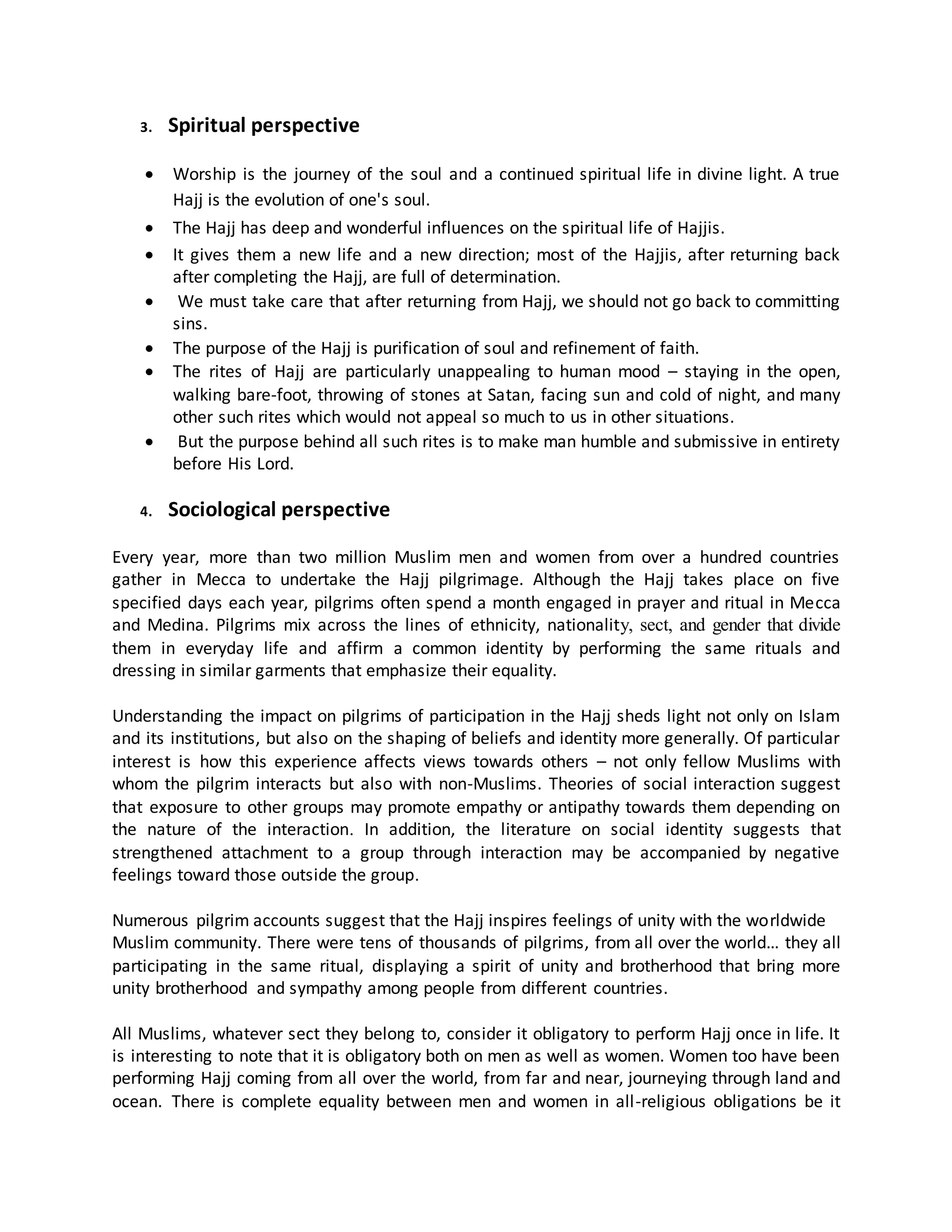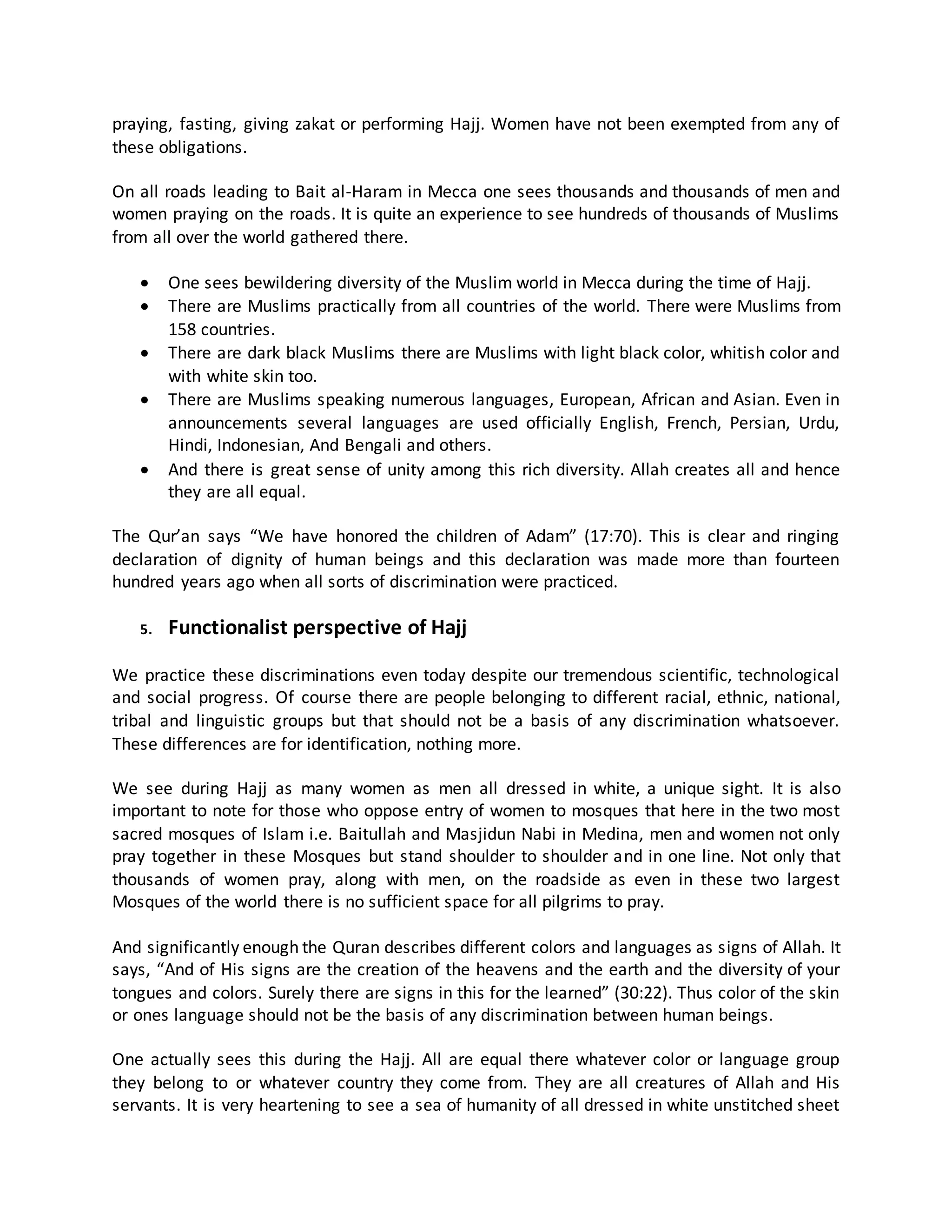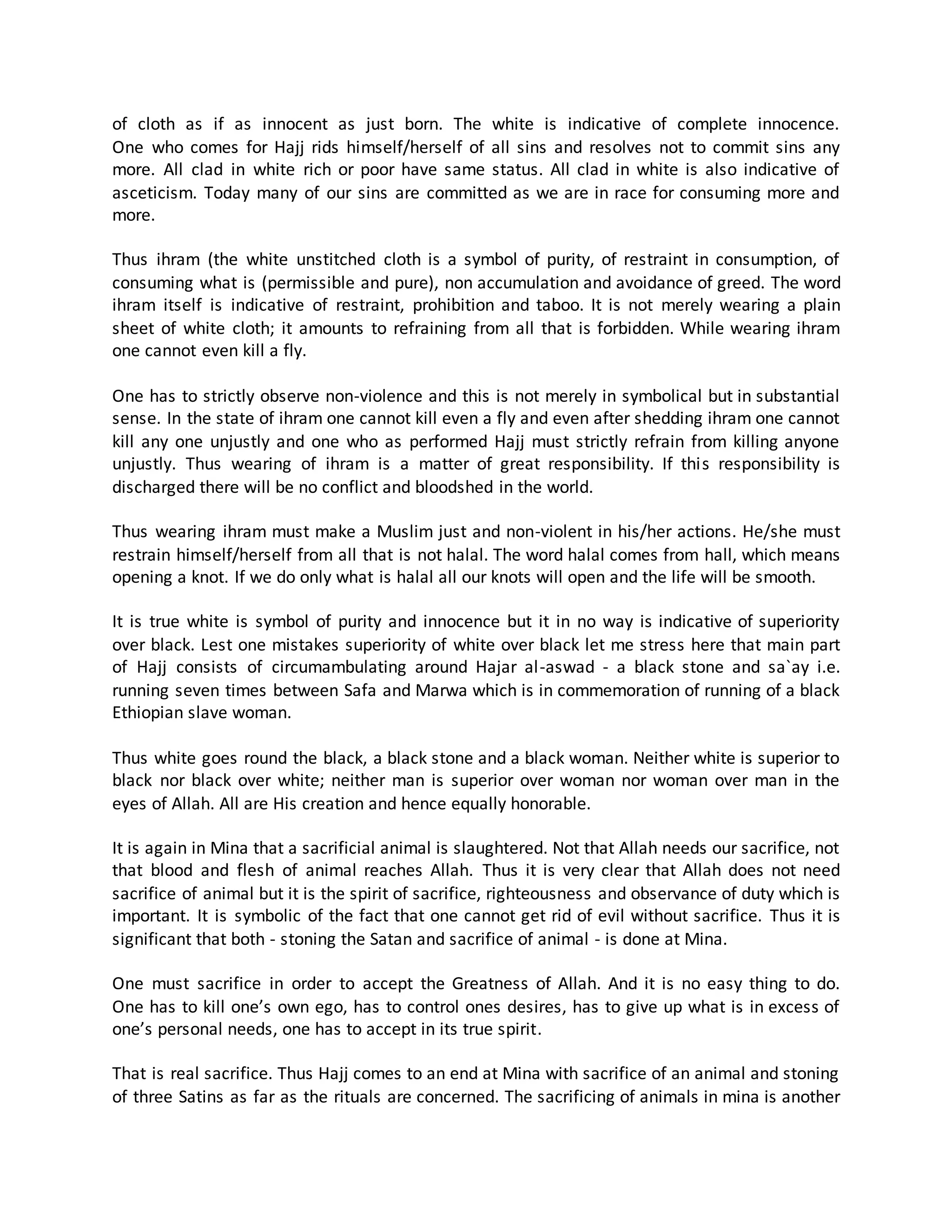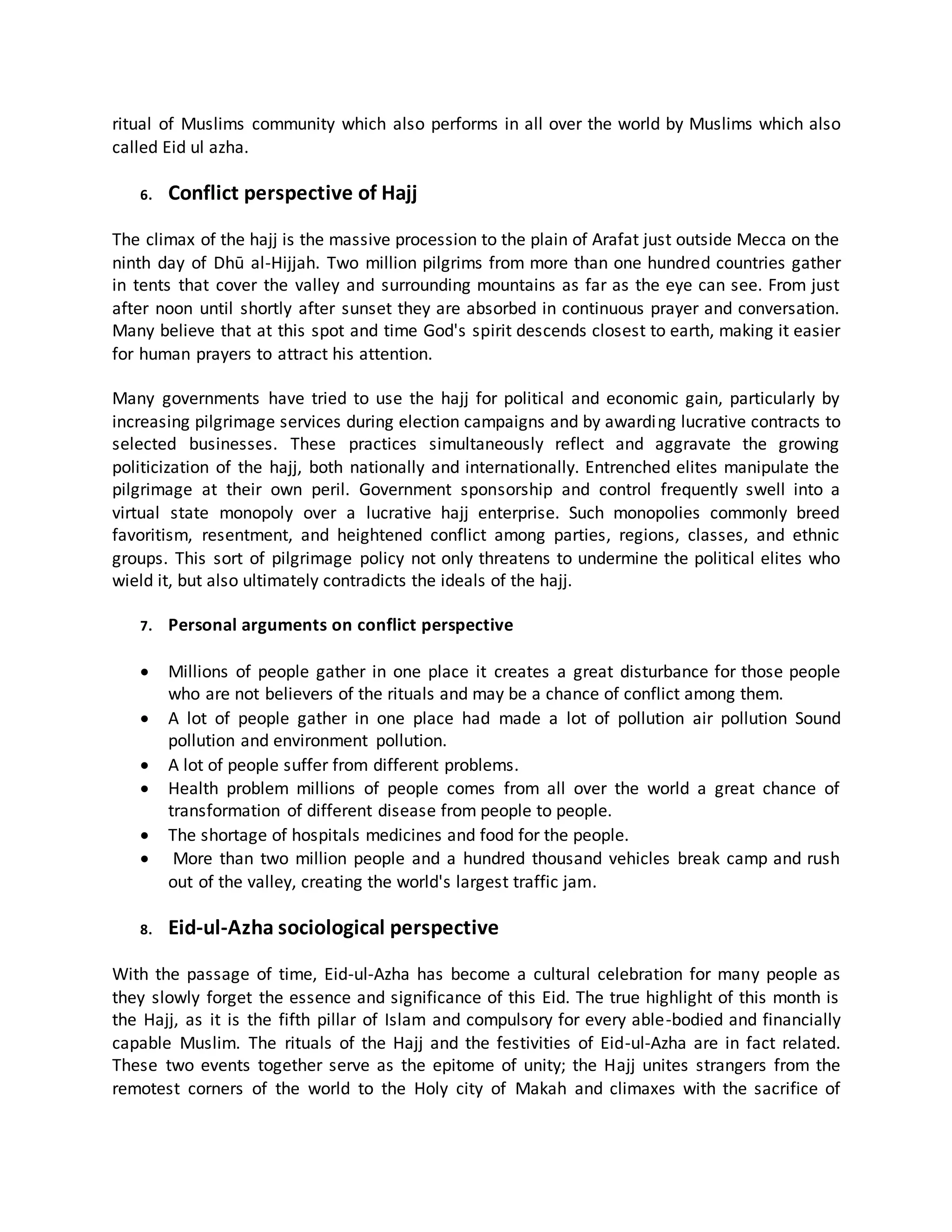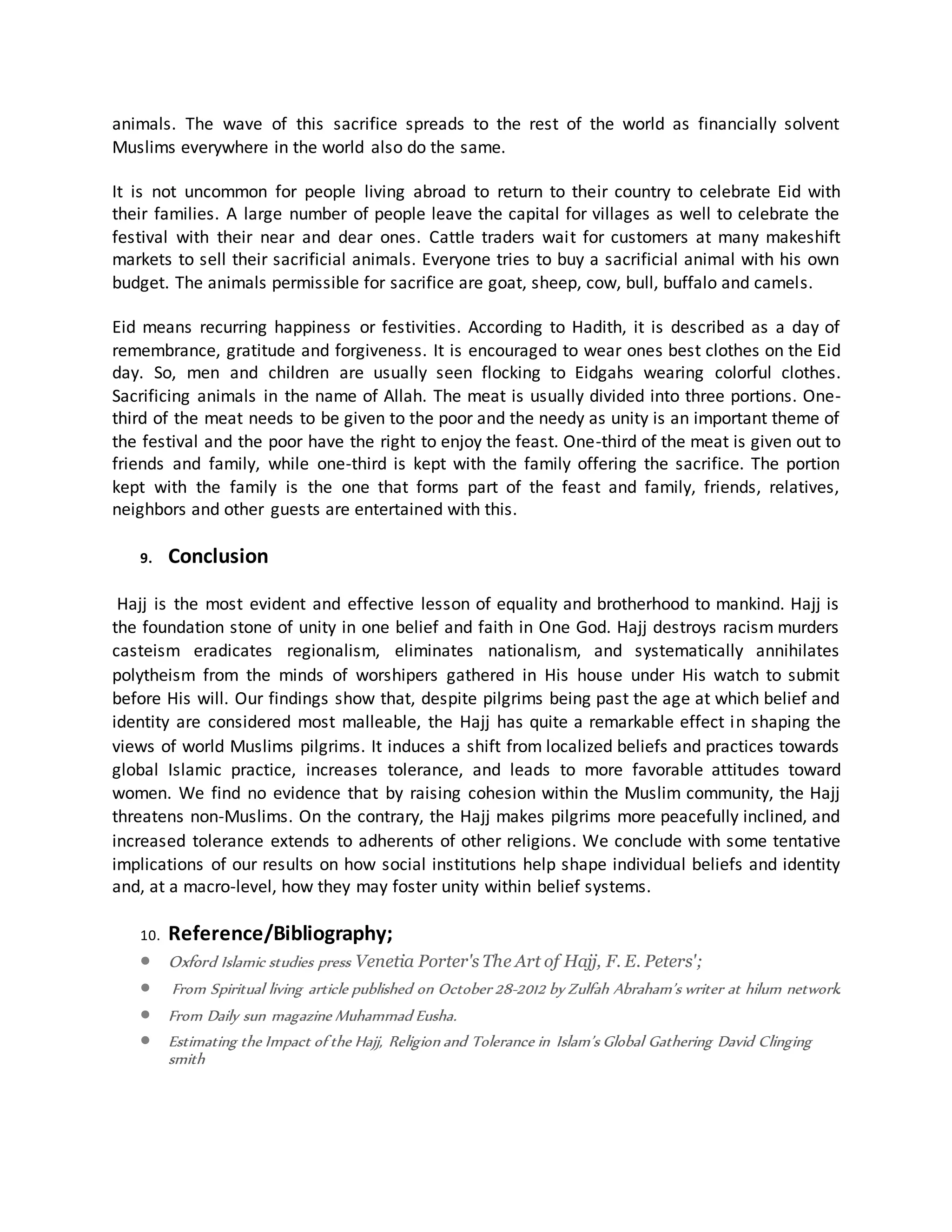Hajj is the annual pilgrimage to Mecca that all Muslims are required to make once in their lifetime if they are physically and financially able to do so. It represents the coming together of Muslims from all over the world in a spirit of unity and equality. During Hajj, pilgrims engage in rituals of worship and reflection intended to deepen their spiritual connection with God and experience humility and submission. Sociologically, Hajj breaks down social and cultural divides as pilgrims from many nations interact and see their shared identity as Muslims as more important than differences. Functionally, Hajj reinforces Islamic principles of equality of all people and avoidance of sins through rituals like wearing the plain white ihram garment and
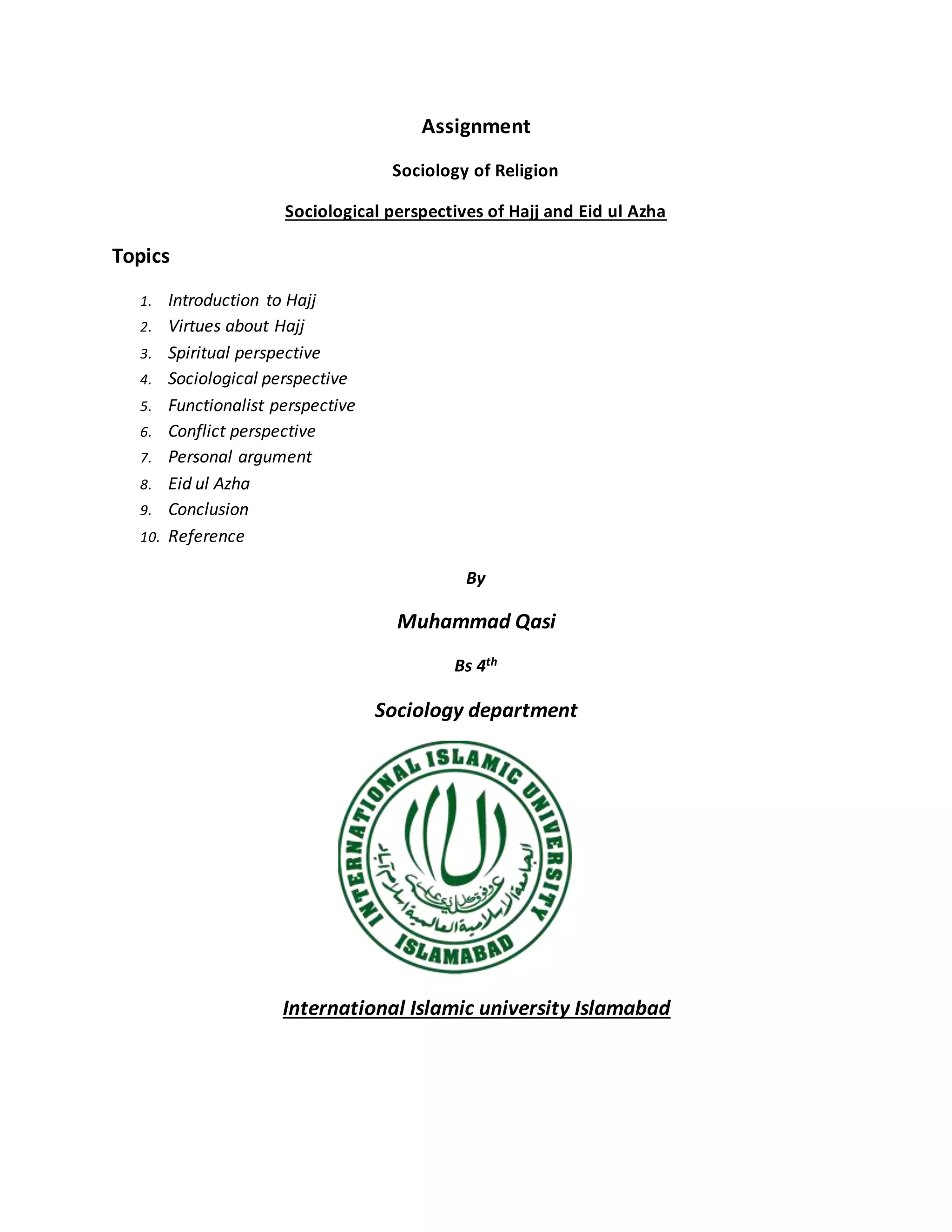
![1. Introduction
For the Muslim pilgrim the significance of the Hajj is entrenched in its multiple layers covering
the personal spiritual elevation experienced to the unity of togetherness of the Islamic
community. This is qualified by the fact that the Hajj pilgrimage, one of the largest spiritual
gatherings on the planet, unites nations and all races as a single brotherhood in spite of
political, economic and social differences.
The significance of the Hajj journey begins simply with an intention on the part of the aspirant
pilgrim. This intention begins the physical, spiritual and mental preparation process which
underlies the success of the pilgrimage. The importance of the intention ensures that the
individual has the mental capacity to undertake the journey. This is in addition to an awareness
of the magnanimity of the experience.
2. Virtues of Hajj
"And pilgrimage to the House is incumbent upon men for the sake of Allah upon everyone who
is able to undertake the journey to it – 3:96 Quran
“And proclaim to the people the Hajj [pilgrimage]; they will come to you on foot and on every
lean camel (means of transport); they will come from every distant pass -That they may witness
benefits for themselves and mention the name of Allah…” [Al-Hajj 22: 27, 28]
And [due] to Allah from the people is a pilgrimage to the House - for whoever is able to find
there to a way. But whoever disbelieves - then indeed, Allah is free from need of the worlds.”
(Qur’an 3:97)
Hajj is one of the pillars in Islam and was commanded in 9A.H. It is the perfection of faith and
true surrender to the Almighty. It is a stage in which man can develop himself spiritually. It is a
time when the pilgrim forgets his own hearth and home, his comforts and amenities of life, his
dear wives and children, his hard-earned wealth, his friends, relatives and everything he
possesses, therefore leading to the conclusion that Hajj is the best training ground for absolute
and complete surrender to the divine command.
Hajj teaches us complete submission to divine will, because one without sufficiently
understanding the inner meaning of going round the kabaah kissing the black stone, running
between safa and marwa and the throwing of stones at jamrat does these things in blind
submission to divine order. Therefore, God becomes pleased with his servant saying:](https://image.slidesharecdn.com/introductiontohajj-141221093417-conversion-gate01/75/assignment-on-hajj-2-2048.jpg)
